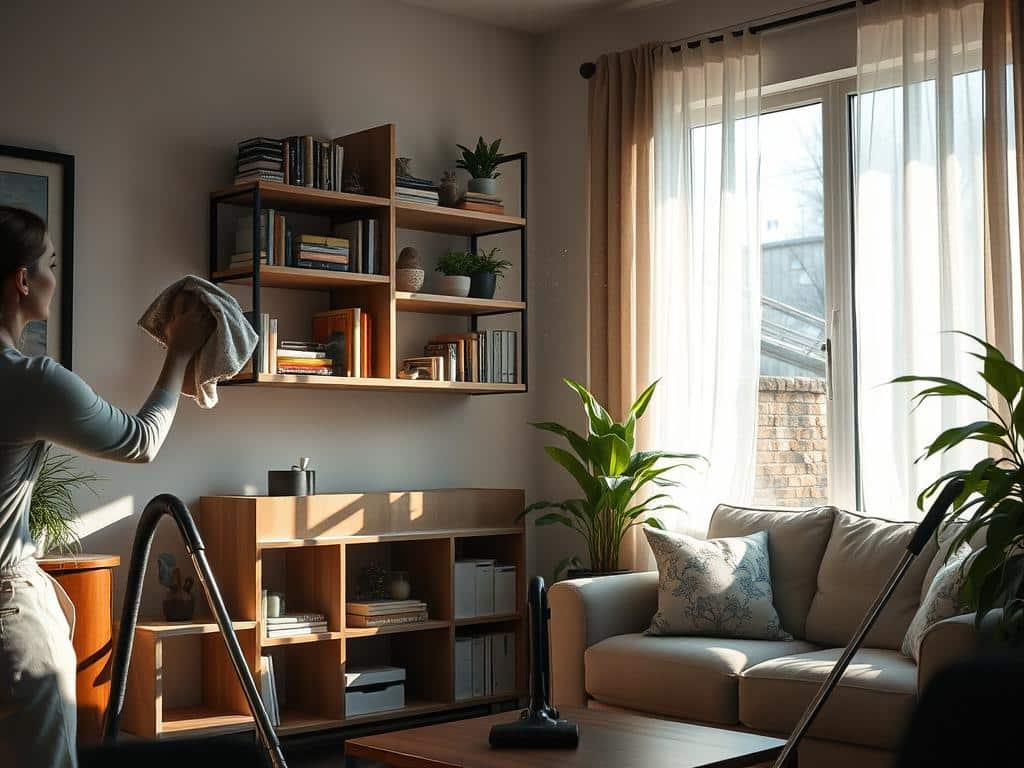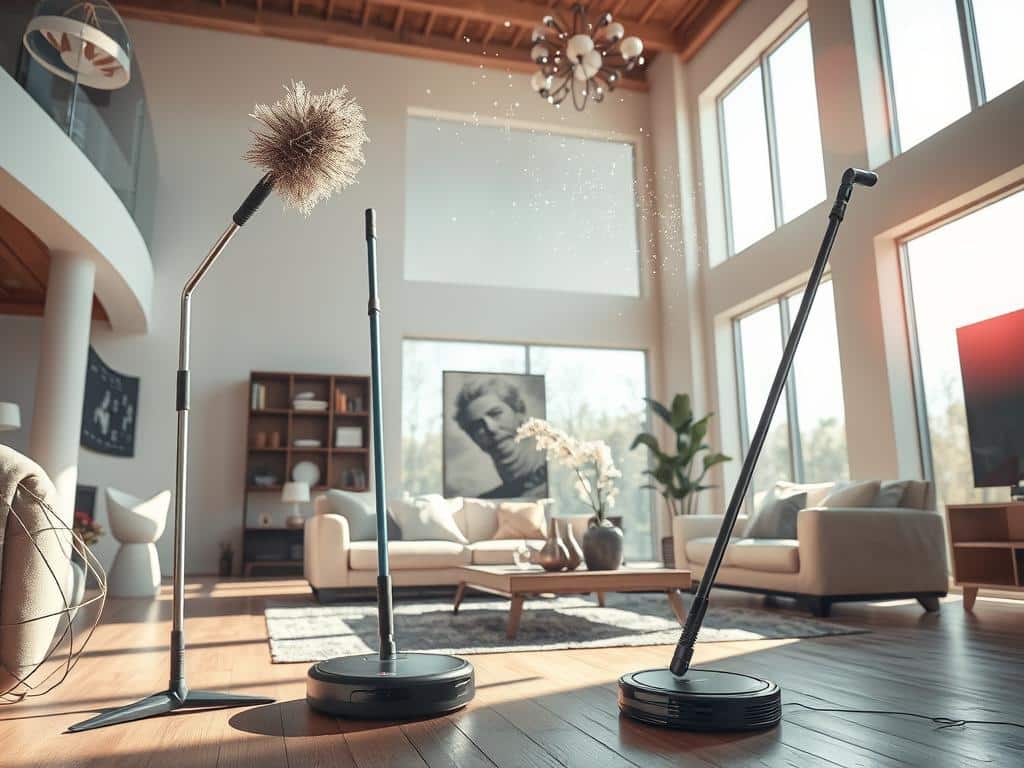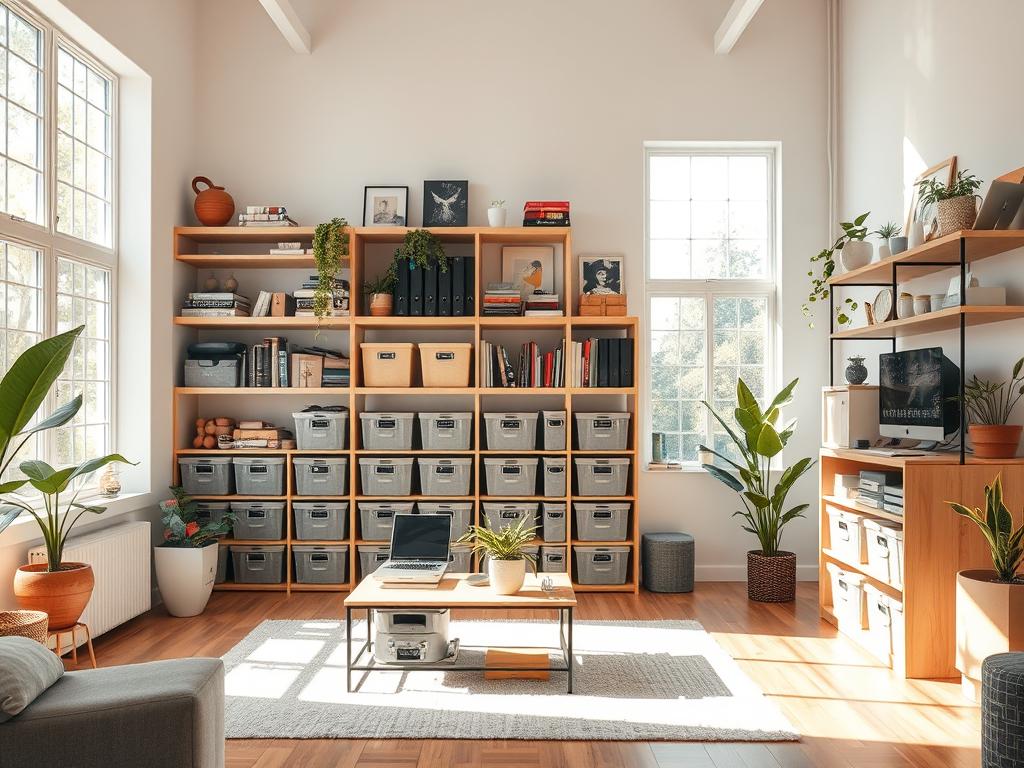
Maintaining a dust-free home is more than just a household chore; it is essential for improving air quality and reducing allergens. Dust, primarily composed of skin cells, hair, and pollen, can significantly impact your health. Adopting regular cleaning habits and effective dusting techniques can keep your home cleaner and more comfortable. Experts suggest dusting once a week to mitigate the accumulation of dust. Whether you’re dealing with hard-to-reach places or simple surfaces, a few strategic practices can make a big difference.
Dust not only diminishes the overall cleanliness of your home but can also adversely affect air quality. For those with allergies, dust mites and their droppings pose a frequent issue, as noted by the Asthma and Allergy Foundation of America. Regular dusting of your home from top to bottom and using the right tools are crucial steps in managing these allergens.
To clean smarter and ensure thorough dust removal, always start from higher areas and work your way down. This method prevents dust from resettling on surfaces you’ve already cleaned. Microfiber cloths are particularly effective in trapping and holding dust particles, while specialty tools like telescoping dusters are excellent for hard-to-reach spots. By incorporating these techniques and tools into your routine, you can maintain a tidier, healthier home environment.
Importance of Regular Dusting
Regular dusting plays a crucial role in home maintenance. Dust is composed of a combination of elements such as dead human skin cells, hair, pet dander, dirt, and pollen. Dust can accumulate quickly, leading to the formation of dust bunnies hiding under or behind furniture. Not only does this dust accumulation affect aesthetic upkeep, but it also impacts health.
Health Benefits
Dust can harbor allergens like pet dander, pollen, and bugs. Regular dusting reduces the risk of sickness and allergies, including symptoms such as coughing, eye irritation, sneezing, asthma irritation, and hay fever. By integrating dusting into your home maintenance routine, you can effectively reduce sickness and provide allergy relief. Ensuring optimal air quality by reducing allergens, dust mites, pet dander, and mold is essential, especially during peak allergy seasons like spring and fall.
Aesthetic Benefits
From an aesthetic point of view, a layer of dust can detract from the appearance of your home’s furnishings and make a space seem unkempt. Regularly dusting surfaces and vents not only preserves the integrity and appearance of furniture and appliances but also enhances the appearance of items such as dressers, tables, counters, carpets, and baseboards. Consistent dusting helps maintain the beauty and cleanliness of your home, ensuring its aesthetic upkeep.
Tools and Methods for Efficient Dusting
Achieving cleaning efficiency in your home starts with selecting the right dusting tools. From microfiber towels to HEPA vacuum cleaners, each element plays a crucial role in maintaining a dust-free environment.
Microfiber Cloths and Towels
Microfiber towels are considered one of the most effective dusting tools due to their ability to trap and hold dust particles efficiently. Unlike paper towels, which often push dust around, microfiber towels capture and remove dust from surfaces. The fibers in these towels can hold up to seven times their weight in dust, making them ideal for various cleaning tasks. Using the quarter folding technique can increase the surface area dusted and improve cleaning efficiency.
Vacuum Cleaners with HEPA Filters
Vacuum cleaners equipped with HEPA filters are excellent at capturing and containing airborne dust particles, which helps in preventing the re-distribution of dust. Regular use of a HEPA vacuum can ensure that dust does not settle back onto cleaned surfaces, thus reducing the frequency of re-dusting. Additionally, maintaining your vacuum through regular cleaning and filter changes can enhance its overall effectiveness and lifespan.
Specialty Tools
Specialty dusting tools are designed to tackle specific challenges and hard-to-reach areas. These include:
- Canned Air: Ideal for electronics, such as keyboards, where dust tends to accumulate in small crevices.
- Paintbrushes: Perfect for delicate items and tight spaces where larger tools may not reach.
- Lint Brushes: Effective for fabric surfaces like upholstery and curtains, trapping fine dust particles that vacuums may miss.
- Extension Tools: Microfiber cloths with long handles or vacuum attachments can efficiently clean high or difficult-to-reach places.
| Tool | Usage | Benefits |
|---|---|---|
| Microfiber Towels | General dusting, especially flat surfaces | High dust capture efficiency, reusable, washable |
| HEPA Vacuum | Floor and air dust removal | Captures fine particles, prevents airborne dust redistribution |
| Canned Air | Electronics, tight spaces | Dislodges dust in hard-to-reach areas |
| Paintbrushes | Delicate items, intricate details | Thorough cleaning without damage |
| Lint Brushes | Upholstery, fabric surfaces | Removes fine dust, effective for fabrics |
| Extension Tools | High and hard-to-reach areas | Increases reach, reduces cleaning time |
By incorporating these dusting tools into your cleaning routine, you can significantly boost your cleaning efficiency and maintain a dust-free home. Remember, the right tools not only improve effectiveness but also save you time in the long run.
Room-by-Room Dusting Guide
Dust tends to accumulate at different rates in various rooms of your home, and each area requires unique dusting techniques. This comprehensive room cleaning guide will help you tackle dust buildup effectively, ensuring that every room is dust-free.
Living Room
Start by focusing on electronics that attract dust due to static charges. Use microfiber cloths to gently wipe down TV screens, remote controls, and other electronic devices. Don’t forget to dust shelves, coffee tables, and decor items. Vacuum upholstered furniture and under the couch to prevent hidden dust bunnies.
Bedroom
Bedding is a magnet for dust mites. Washing sheets every one to two weeks can limit your exposure to these allergens. Use a vacuum with a dust-brush tool for mattresses and bed frames monthly. Pay special attention to areas under the bed and other furniture. A mattress protector can also help keep dust mites at bay.
Kitchen
Kitchens are prone to dust accumulation due to frequent air circulation. Wipe down appliances and fixtures regularly to prevent dust buildup. Focus on cabinets, countertops, and shelves. Cleaning the inside of your refrigerator and under the stove is crucial as these places often get overlooked.
Bathrooms
Bathrooms require more frequent dusting due to the presence of moisture and constant air flow. Wipe down all surfaces including sinks, countertops, and fixtures. Don’t forget hard-to-reach areas such as the tops of mirrors and shower doors. Floor tiles and matts should also be cleaned regularly.
Hard-to-Reach Places
Ceiling fans, high shelves, and air vents are notorious for collecting dust. Cleaning expert Jeri Fritz advises that ceiling fans should be cleaned at least once a month. Use extension tools to reach high shelves and tight spots. Regularly spritzing houseplants with a mister can also keep dust at bay.
| Room | Key Areas to Dust | Frequency |
|---|---|---|
| Living Room | Electronics, furniture, shelves | Weekly |
| Bedroom | Bedding, under furniture, mattresses | Bi-weekly |
| Kitchen | Appliances, cabinets, countertops | Weekly |
| Bathrooms | Surfaces, fixtures, tiles | Bi-weekly |
| Hard-to-Reach Places | Ceiling fans, high shelves, air vents | Monthly |
Tips on How to Dust Effectively
An effective dusting strategy can significantly improve your home’s cleanliness and air quality. Implementing a regular cleaning schedule that incorporates preventive cleaning methods will ensure dust doesn’t accumulate. Here are some valuable tips to help you dust more efficiently:

Dusting from Top to Bottom
Experts advise starting dusting from the top areas, such as ceiling fans and high shelves, and working your way down. This approach reduces the likelihood of dust falling onto already cleaned surfaces. Dusting from the top down can help prevent missing spots and ensure a thorough clean.
Regular vs. Deep Clean Dusting
Distinguishing between regular and deep cleaning is crucial. Regular dusting should be part of your weekly cleaning schedule, focusing on smooth surfaces like tabletops and bookshelves. Deep clean dusting, on the other hand, involves moving furniture and targeting less noticeable spots where dust accumulates, such as behind appliances and under beds.
Proper Dusting Techniques
Using microfiber cloths is essential for capturing dust effectively. Unlike traditional feather dusters, microfiber cloths have small fibers that attach to microscopic dust particles. Additionally, spraying cleaning products directly onto the cloth provides better control, preventing accidental spraying onto unintended surfaces. Long-handled microfiber dusters are excellent for reaching walls and ceilings, while Swiffer dusters work well for cleaning blinds.
Preventive Measures
Incorporating preventive cleaning measures can drastically reduce dust buildup. Sealing windows and vents, minimizing clutter, and using air purifiers are effective strategies. It’s also important to clean your dusting tools regularly to ensure optimal performance. Utilizing HEPA filters in vacuums and HVAC systems helps capture circulating dust, preventing it from resettling in your home.
For more information on creating a clean sleeping environment and eco-friendly cleaning methods, check out this non-toxic approach to cleaning a Tempurpedic.
Conclusion
In conclusion, understanding how to dust effectively and incorporating these practices into your regular cleaning routine can have significant health and aesthetic benefits. Adopting effective dusting practices, integrating the use of proper dusting tools like microfiber cloths, and following essential dusting routines can significantly reduce the build-up of dust and allergens in a home environment.
Maintaining a clean home starts with regular and effective dusting practices tailored to each room’s unique needs. Utilizing specialized tools, such as vacuum cleaners with HEPA filters and extendable dusters for hard-to-reach areas, can greatly enhance the efficiency of your cleaning efforts. These methods not only improve the aesthetic appeal of your home but also support a healthier living environment.
Remember, consistent efforts in dust management, including preventive measures like regular weekly cleanings and using top-to-bottom dusting techniques, contribute vastly to the overall quality of your indoor spaces. By prioritizing these habits, you ensure a welcoming atmosphere that reflects the benefits of dusting and a well-maintained home.



